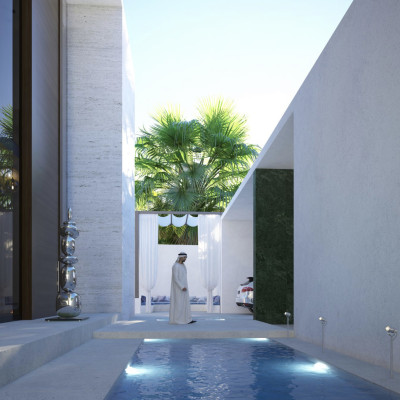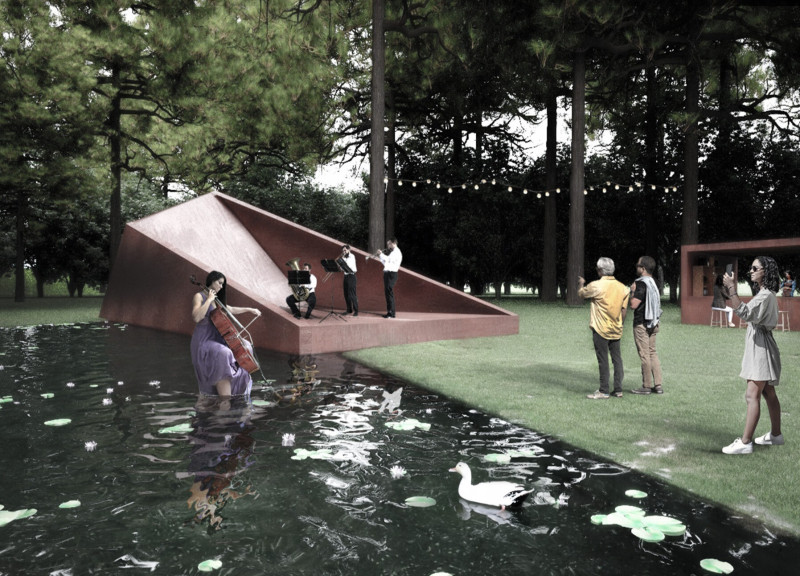5 key facts about this project
The design represents a careful consideration of form and function, grounded in the intent to create spaces that foster community engagement and interaction. The architecture incorporates a thoughtfully planned layout that allows for flexibility in its use, catering to varied activities and functions. This adaptability reflects the principles of contemporary architecture, where spaces must evolve to meet the changing needs of their users over time.
The project features a multitude of important design elements that contribute to its overall appeal. The façade is crafted from a mix of materials, showcasing a dynamic interplay between texture and light. Predominantly, the use of concrete provides structural integrity and durability, while large expanses of glass create a sense of openness, inviting natural light to fill the interiors. This emphasis on transparency connects the indoors with the outdoors, blurring the boundaries of the space and reinforcing the relationship between the building's occupants and the surrounding landscape.
Wood accents introduce warmth, breaking the starkness of concrete and adding a level of comfort within the design. This material choice links the architecture to the local environment, reminiscent of traditional building practices while advancing a modern aesthetic. In complement to the practical aspects of the materials selected, sustainability is a critical consideration. By integrating locally sourced materials, the project not only minimizes its carbon footprint but also supports local economies and maintains cultural relevance.
Additionally, the architectural layout demonstrates a keen understanding of spatial relationships, guided by principles of circulation and accessibility. Thoughtfully positioned pathways and open areas facilitate movement, ensuring that users can navigate through the space intuitively. Communal areas are at the heart of the design, aimed at fostering social interaction. These spaces are flexible, allowing for both large gatherings and smaller, more intimate meetings, which enhances the functionality of the building.
Unique design approaches are evident throughout the project, particularly in the incorporation of green technologies. Sustainable features, such as rainwater harvesting systems and energy-efficient lighting, are seamlessly integrated into the overall design, showcasing a proactive response to environmental challenges. This innovative attitude not only serves to educate occupants on sustainability but also positions the project as a leader in responsible building practices.
Landscaping plays a pivotal role in enhancing the project’s attributes, with carefully curated greenery that complements the building's modern lines. The outdoor spaces are designed not only for beauty but also for practical use, providing areas for relaxation and recreation that engage users with nature. This thoughtful interplay between architecture and landscape design enriches the user experience and contributes to the overall sustainability of the environment.
As a holistic representation of contemporary architecture, this project serves as a case study in how design, materiality, and environmental consciousness can converge to create spaces that are not only functional but also energizing and welcoming. The attention to detail throughout the design process emphasizes the importance of user experience, ensuring that the architecture supports the community it serves.
For those interested in a deeper exploration of this architectural project, reviewing the architectural plans, architectural sections, and various architectural designs will provide a clearer understanding of the innovative ideas and design principles that define this endeavor. This examination will reveal the layers of thought and intention that underpin the project's success, inviting an appreciation for the intricate balance of aesthetics and practicality within the modern architectural landscape.


 Juan Jose Aragon Lopez
Juan Jose Aragon Lopez 






















